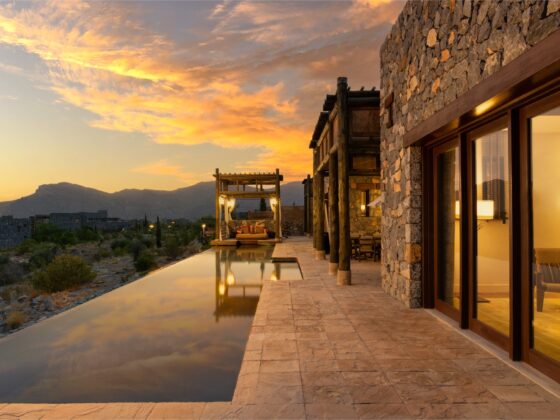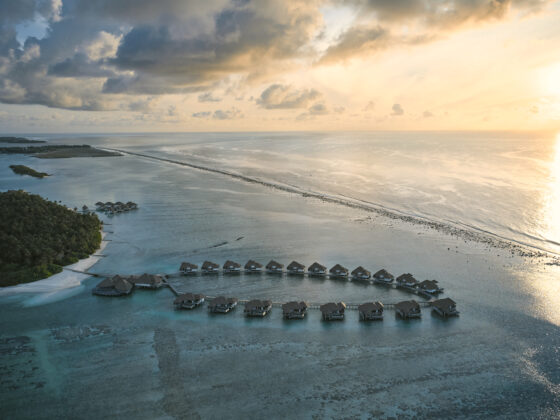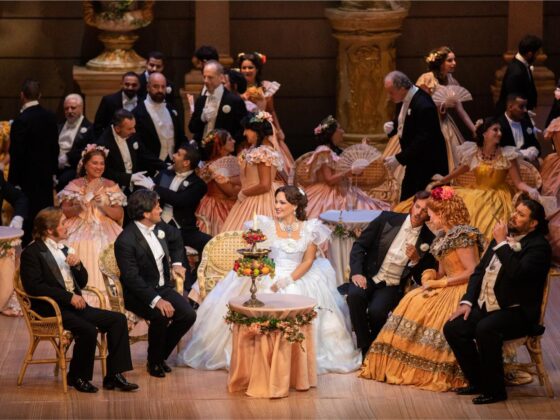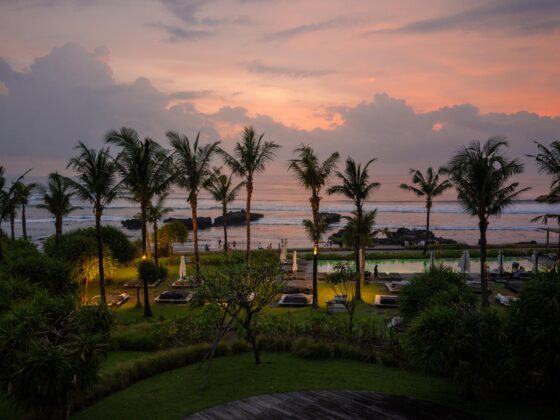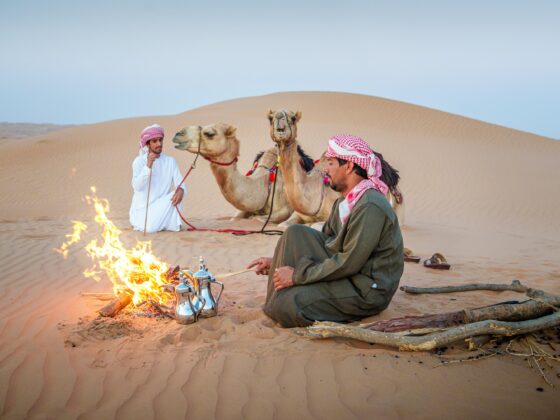Royal Opera House
The Royal Opera House in Muscat is the main venue for musical arts and culture in the country. The opera house was established in 2011 and it consists of a concert theatre, an auditorium and an art centre for musical, theatrical and operatic productions. It also houses a cultural market with retail, luxury restaurants and uniquely-designed landscaped gardens.
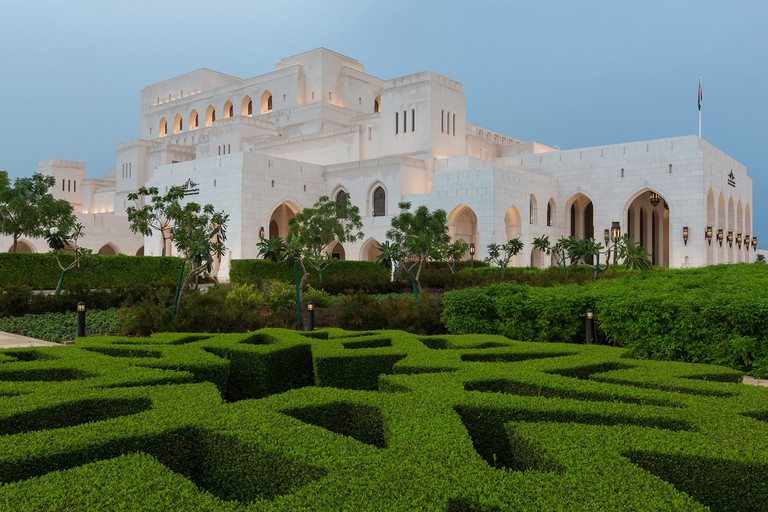
From the shape of the building to its divisions and sections, interior design, decorated walls, crystal chandeliers, red carpets, lightening and wooden walls, the Royal Opera House is a mind-blowing representation of the amazing and contemporary architecture in Oman.
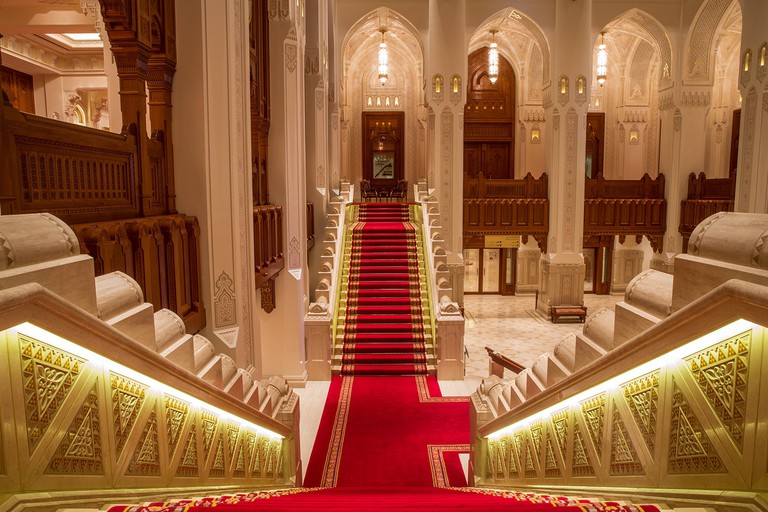
Al Alam Palace
The Al Alam Palace is the ceremonial palace of Sultan Qaboos Bin Said, the leader of Oman. It is one of six residences belonging to the ruling family and it has a history that extends over 200 years. Distinguished with golden and blue colours, the palace evokes an elegant, yet very simple and unique architecture. It has polished marble surfaces, wooden balconies and beautifully shaped gardens, all of which reflect a traditional Omani architectural style.
//wp-content/uploads/2018/02/16566254166_affa15b354_o.png)
Sultan Qaboos Grand Mosque
Established in 2001, the Sultan Qaboos Grand Mosque is the most famous mosque in the country, covering an area of more than 450,000 square metres. The mosque features one central golden dome, the main minaret that is 90 metres high and four minarets that are 45.5 metres high. There’s also its beautiful arches and decorated walls to admire.
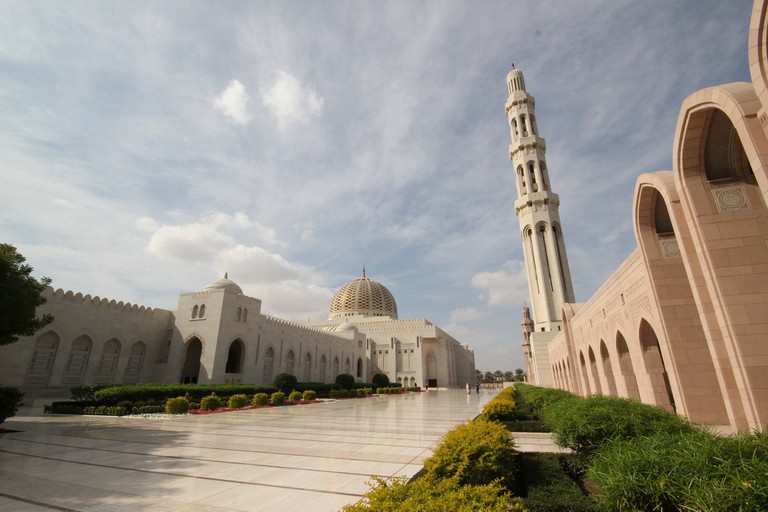
From the inside, the mosque has the second largest carpet in the world, which is made with 28 different colours with varying shades, tied together in classical Persian Tabriz, Kashan and Isfahan design traditions. The mosque also has a central crystal chandelier, which is 14 metres tall, along with exceptional colourful roof decorations.

Muttrah Souq
The Muttrah Souq is one of the oldest in the Arab world and one of the most famous traditional souqs in Oman. Locally, it is known as Al Dhalam Souq, which means ‘darkness’ in Arabic. This is because the stalls and small shops block sun rays from entering, which results in people use lamps all day long. The souq is located on the old harbour of Muscat. Its architecture reflects the unique ancient Omani traditional style of architecture, with wooden decorated roofs, arches and entrances. It is the perfect place to buy traditional gifts and Omani souvenirs. It’s also a mind-blowing area to take pictures in.
Al Jalali and Al Mirani Forts
Al Jalali Fort and Al Mirani Fort are both located in the harbour of the city of Old Muscat. They were built by the Portuguese at around the same time in order to protect the harbour from Ottoman attacks. They are two of the most famous forts in Oman. When they were controlled by Omani forces, they had an ancient long history of protecting Muscat and Oman against all invaders and foreign attacks. Their exceptional architecture reflects the ancient heritage and the brave history of the Omanis.
Source: Click Here




